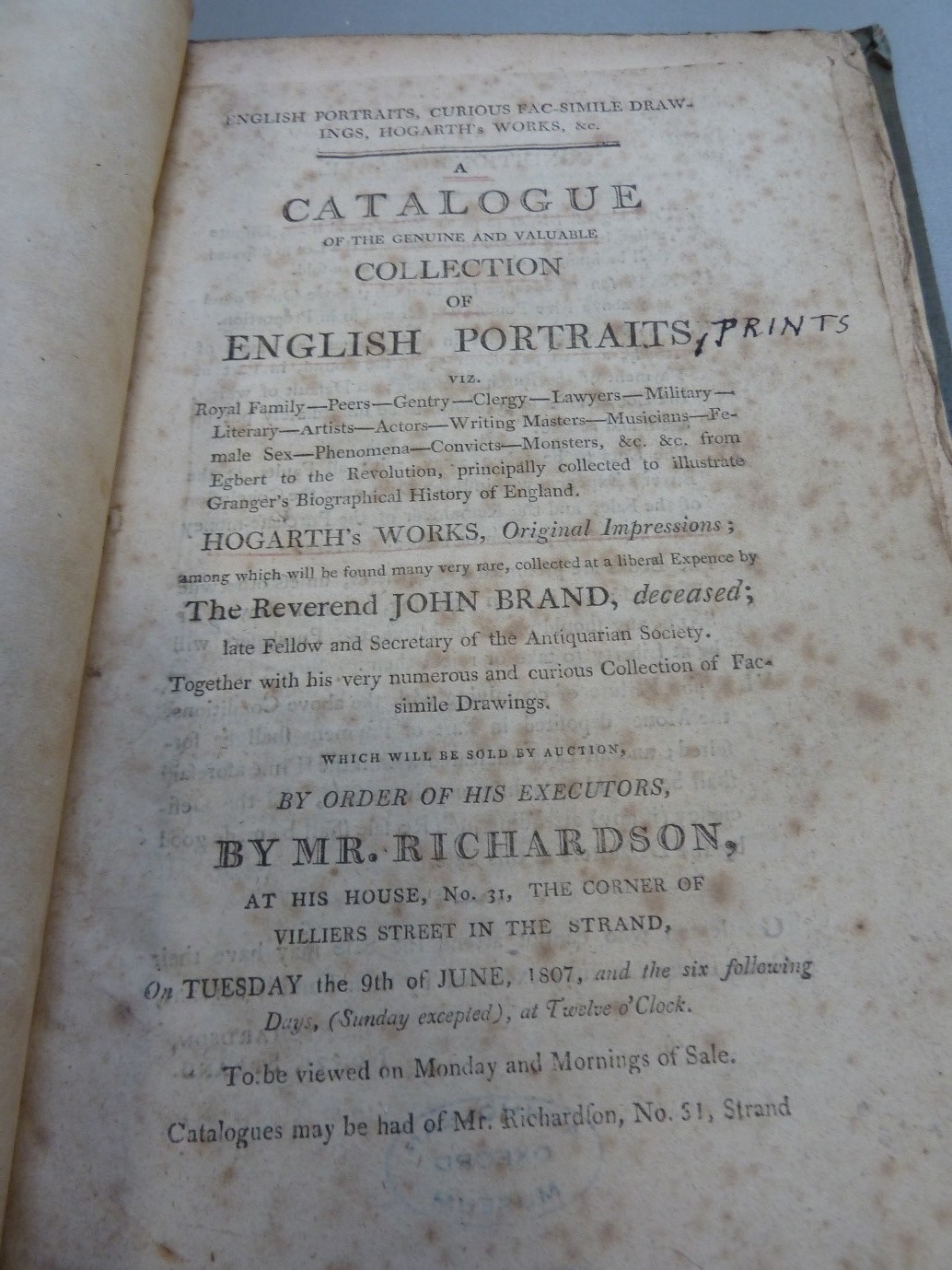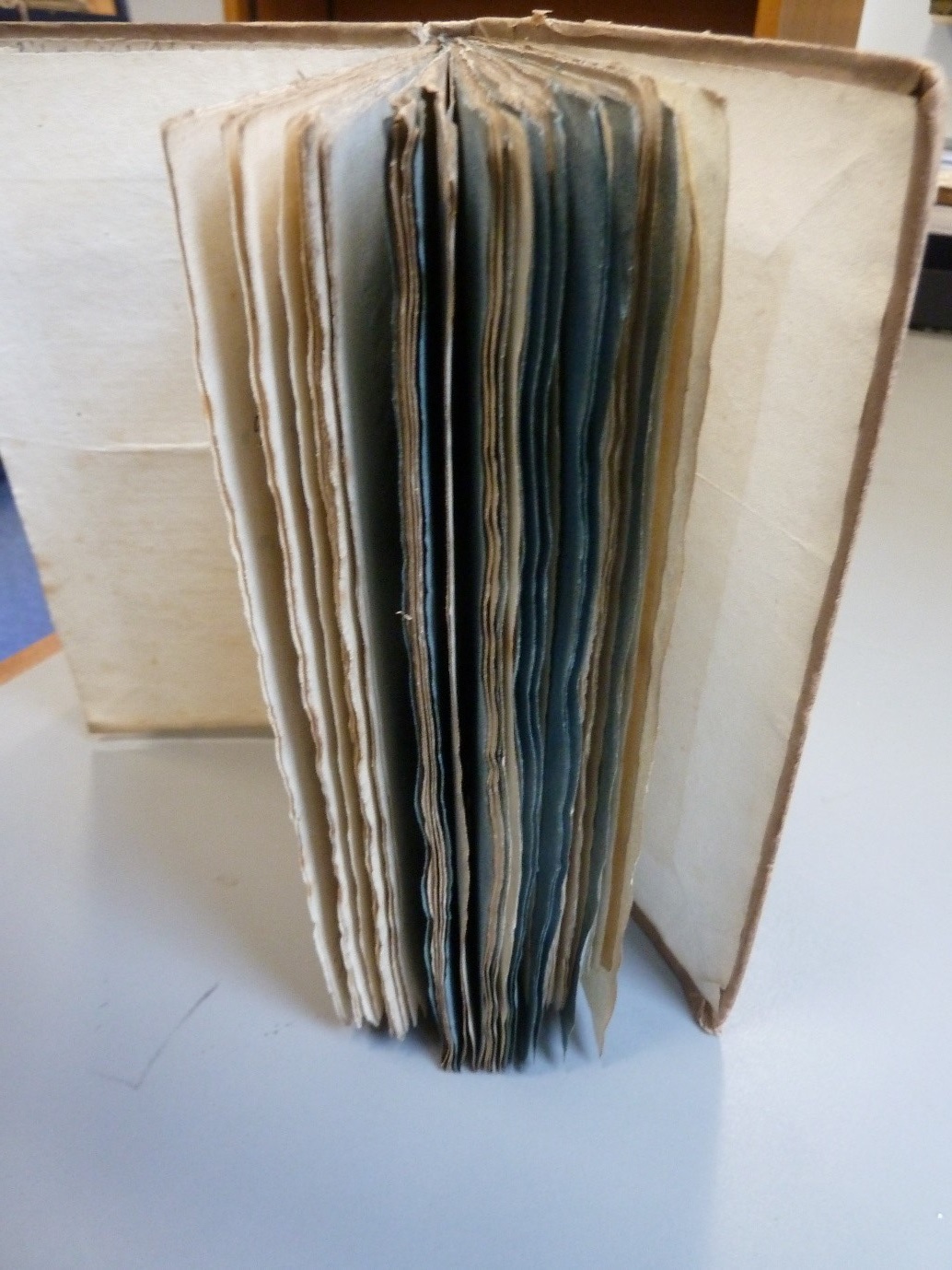So the other night I was down at the library cataloguer bar (The Unauthorised Heading: you wouldn’t know it, it’s not in a part of town where nice people go) and because we hadn’t had a good scrap for yonks, I decided to mix things up by sounding off on sales documentation – meaning auction or sales catalogues – to get a rise out of some out-of-towners I didn’t like the look of.
I began in a loud voice, “Literally every art library in Britain holds a collection of sale catalogues, and…”
[A clamour of angry voices rose in disagreement: the mood became as fraught as that infamous night when the Committee on Cataloging: Description and Access announced that its mission was no longer to create “AACR3,” but rather something entirely new… and I scarcely need to remind you how that kicked off.]
I stared down the room. “You heard me! Every. Single. Art. Library in…”
[whoosh!] The red-bound house copy of Library of Congress Subject Headings (25th ed., 2002), v. 5 (the thick one, and yes, I mean “S-Z”), flew within a few millimetres of my left ear and [smash!] shattered twenty two- litre bottles containing 140 proof grain alcohol and splattering the motley assembly with cheap hooch.
While many of the assembled ruffians rushed to lap up the flowing spirits, spitting out those shards of jagged glass too large even for a hardened technical services specialist to swallow, a few voices rose clearly in challenge. “Alright, then. Let’s see the bibliographic records!”
I straightened my cardigan, wrapped a weighted book snake around one fist while tightening my grasp on a 45cm ruler in the other – “bibs.? I don’t have to show you any stinking bibs.” – and leapt in swinging.
* * *
Here’s the thing about sales documentation: while I admit that I cannot prove the truth of its postulated ubiquity, neither can I nor anyone else exactly disprove it. And this is because, while a very large number of historic libraries do in fact have extensive holdings of sales cats., very few of those libraries have ever committed the time and effort to catalogue them to the same standards as the rest of their textual resources. The library catalogues of many libraries show little or no meaningful presence of sales documentation.
It’s not difficult to explain this fact. Sales catalogues bring a whole lot of weirdness to the table.
For one thing, it’s the way that sales cats. enter library collections. Libraries have frequently acquired runs of sales catalogues on subscription or standing order, which gives the sense that they were essentially a periodical/serial/continuing resource, and that it’s a simple matter just to file each in the next space on the shelf and slowly back away. But while catalogues are issued in series, and obviously carry forward many fundamental details consistently from one to the next, it is the very differences between individual sales that are essential to record: What is the specific nature of the materials being sold? Whose collections were they? When and where does a sale occur?
Historic sales documentation, meanwhile, often reaches libraries through consolidation of collections within a larger organisation (as with sales catalogues that entered the Sackler from the Ashmolean, for example), or through donation. Gifts from donors interested in the arts or material culture frequently include sales catalogues among the rest of the resources. Such catalogues are often the last resources to receive a cataloguer’s attention, being as they are frequently very slight, or sometimes bundled, or even bound, together with other catalogues (or pamphlets or offprints or ephemera…). Sales catalogues are essential resources in the study of provenance, and yet their own provenance is frequently murky.
In addition, the titles of sales catalogues can simultaneously be very long, very convoluted, and very samey, one to another, and offer a test to the patience. Anyone for “Sale of a Collection of the choicest Engravings after the Masters of European Schools, as Flemish, French, Spanish, the cities of Italy, & c., assembled by a Known Dilettante in his Seat in Somersetshire, and now offered for sale by Messrs. Christie, Manson and Woods, at their Premises in St James’s?” How about twelve sales all titled: “Modern British pictures?” Without a conscious effort by the library cataloguer to be explicit – and to remain awake – a library catalogue record sometimes fails to make transparently evident the essential nature of the resource – a listing of material objects changing ownership, changing physical location – that it describes.
In general, then, suffice it to say that almost no cataloguer thinks, “Great! An auction catalogue!” when working their way through a stack of resources. To address sales catalogues individually can be labour-intensive.
Hence, obstacles to access to the national distributed collection of sales documentation are considerable because its management has not been, and continues not to be, a priority either for the auction houses themselves, or for individual libraries. Books are exciting! Books are substantial! Books are durable! Books are big enough that they reveal visible progress as they shift through the workflow! Books books books. It’s all about books. As a consequence of under-documentation, in contrast, the extent, scope and security of sales documentation is indeterminate, relative to other published materials, and potential risk of loss to significant intellectual content exists.
This has long concerned the library community. (You’re welcome.) A project initiated c. 2002 and based at the Courtauld Institute [‘HOGARTH’] encouraged retrospective cataloguing projects, but failed to address the issue significantly, and the HOGARTH portal has now disappeared. The most useful attempt by the profession to improve (international) bibliographic control of sales documentation has been the SCIPIO project.
SCIPIO (originally “Sales Catalog Index Project Input Online,” which seems a bit forced but maybe HANNIBAL was already taken) encourages and standardises library cataloguing, delineating an input standard that addresses the idiosyncrasies of the form. And one advantage of the continuity between sales catalogues is that they lend themselves to systematic cataloguing using templates incorporating SCIPIO.
I quite like cataloguing sales documentation. Would I want to do it all day, every day? Umm… well… that is certainly an interesting question (is the Boss listening?). But do I think it is important that sales catalogues be catalogued individually, in records that consistently record the same data in a consistent manner, and that both local and union catalogues need to become more reliable? Absolutely. At their most basic, sales catalogues offer a unique insight into material culture. And many historic sales catalogues display significant intellectual intervention from previous owners, for example in the recording the identity of buyers, prices realized, or both, often comprehensively. They are highly valuable resources.

I began this blog post because the Sackler holds a small collection of approximately 700 under-catalogued historic sales catalogues in its Rare Book Room. We briefly examined a sample of these during my project looking at resources held in the RBR, and found that only about 6% were catalogued individually in Solo, while more than a third appeared to be unrecorded in Scipio or WorldCat. (I used the word “appeared” because the SCIPIO database includes many unenhanced and frankly obsolete records, with the result that the SCIPIO standard is not applied consistently even within the SCIPIO file, and duplicate records evidently abound.) But what I didn’t realize at first is that this collection represents only a tiny proportion of sales documentation present in the Sackler and wider Bodleian collections. I found more and more records in Solo, some very good indeed. But it remains difficult to get a clear picture of what is held, and where it is.
And so I repeat: “Every art library in Britain holds a collection of sales catalogues. You have a problem with that?” Well, you’d be justified. The problem is trying to determine how much is recorded, and how much more is not?
To learn more about sales documentation held in the Bodleian Libraries (and especially the Sackler Library) and for highly useful guidance on locating the resources you need, please see the Art & Architecture Research Guide’s pages on Sales Catalogues: https://libguides.bodleian.ox.ac.uk/art-architecture/auctions-sales
Joseph Ripp
Special Collections Cataloguing Consultant, Sackler Library










